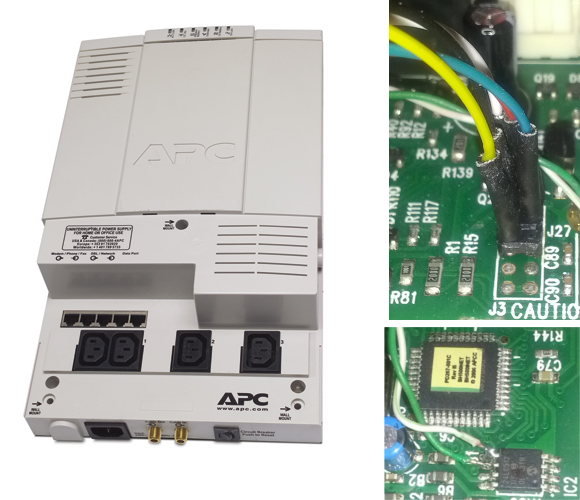
Daz3d Realistic Routine
This article and all of the images within were created by the very talented Brian Sains. Copyright © Brian Sains.
Check out his gallery We will need a working version of the Daz Octane plugin installed (full or demo). This can be downloaded at. Please note – if you are using the demo version then image size is restricted and will be watermarked, and you will not be able to access the material database. If you are not familiar with Daz Studio Octane, will give you an overview. In this tutorial, I will use the Mei portrait image below as an example. Daz Studio Octane Skin Shader Tutorial • Start by downloading • Open Daz Studio. If the plugin is installed correctly, you should have the following icons in your toolbar • Make sure the icon on the right is set to ‘Duf’ (click on it to cycle through the options) – this setting will make sure that all Octane settings and materials from the Duf file are loaded (Manual loads no Octane settings, Auto will try and build materials based on the settings within Daz).
The left icon is for the Main Octane Settings, the middle opens the render viewport. • Unzip and open the SkinShader.duf file you just downloaded. You should find a simple scene with a Sphere primitive. If you open the render viewport the sphere will be rendered, but will be quite dark and not look very much like skin at the moment. • Now import a model – I have used in this example but you can use any model you have. Note that the available surfaces will be different for earlier generation models, but the same principles will apply – e.g.
Please install using the DAZ Install Manager or the standalone installer provided. Reflectivity, and a whole set of Clump controls to increase fur realism. Which will disable some multi-threaded routines to increase system stability. May 11, 2018 - She hangs out with real-life musicians, artists, and influencers in real-life trendy. Others have even asked for her skin-care routine. Wilson freely reveals that he uses 3-D-animation tools called Daz3D and Clo3D to make.
Linksys WAG200G Firmware 1.0 Misc. Software developed by byterapelinksyssourceforgenet. The license of this misc. Software is freeware, the price is free, you can free download and get a fully functional freeware version of Linksys WAG200G Firmware. Get help with WAG200G Downloads. Support and downloads are no longer available for this Linksys device. If the Software is software or firmware embedded on a. I want to update my old Linksys WAG200G firmware but i see that on the page. And the model number is WAG200G 0 Kudos Report Inappropriate Content. Get support for Linksys Wireless-G ADSL2+ Gateway. Installing the wrong software could create configuration issues for your network. WAG200G WAG200G WAG200G. 
Torso in Gen 3 is Head, neck, hips etc. For best results try and use a model that has a diffuse map that is photo-referenced, and not hand painted – Mei Lin 7, and are good examples. • With your chosen model loaded, open the Octane Settings window, and select the materials tab. Exploring Our Octane Skin Material When rendering an object using a PBR (physically based renderer) like Octane, the material needs to replicate its real world equivalent. With skin this involves creating layers for the deep scatter (blood vessels), hypodermis & dermis (fatty tissue), and epidermis (the outermost layer).

At the very least I feel you need the first and last if you want that lovely red translucency (scattering) in the ears. One way is to generate independent layers on the model (each with its own material), but this is cumbersome and from my experience does not add anything. I prefer to generate all the layers within one material. I do this by combining different nodes. Octane has four primary nodes – Diffuse (solid matt surface), Glossy (solid shiny surface) and Specular (clear or transparent surface).
The fourth is a Mix Node where you can combine two or more of these surface nodes. Node structure of the skin material I used in the Mei portrait.
The above is the node structure of the skin material I used in the Mei portrait. Nodes 2 & 3 are adapted from the amazing skin material developed by TonySculptor (freely available in the Octane library). I have added the other nodes around it, and they loosely represent the layers of skin as follows: • Specular Material (blood vessels, or deep scatter) • Specular Material (skin mid-layer) • Specular Material (skin mid-layer) • Diffuse Material (skin surface) • Displacement map (add texture and definition to the surface) In isolation, each of the five nodes will look like the following (Figure 6 is all combined). The five skin layers I am using in my Mei portrait skin. Figure 6 shows all of the layers combined. The additional nodes in the skin material are:• Output node – the item/s that the material is applied to • Mix material node – used to combine two material nodes • Image node – used to place an image within a marterial • Colour node – used to set an RGB/Greyscale setting to a node • Scattering node – used to set the scattering parameters for specular or diffuse nodes Note however, that our current skin material does not contain any texture maps.
We will need to put in appropriate texture maps according to the nodes described above. In particular, there is a Diffuse map in the 4 th picture – let’s go ahead and put that into the skin material. Select the RGB Image node connected to the Diffuse node.